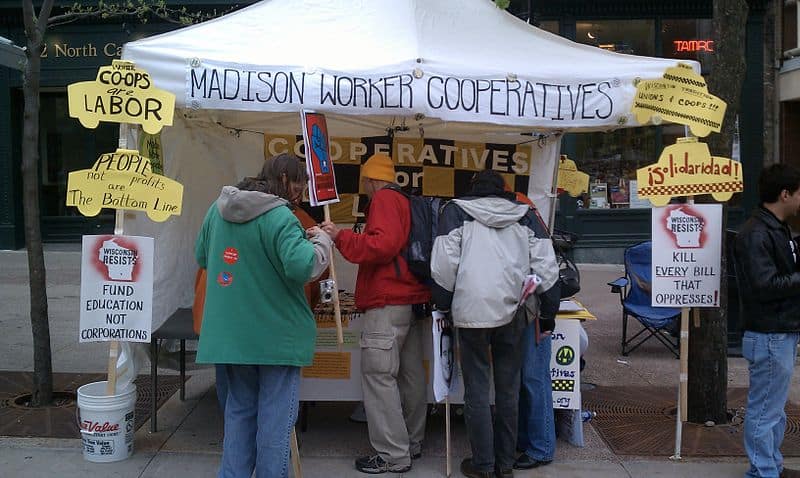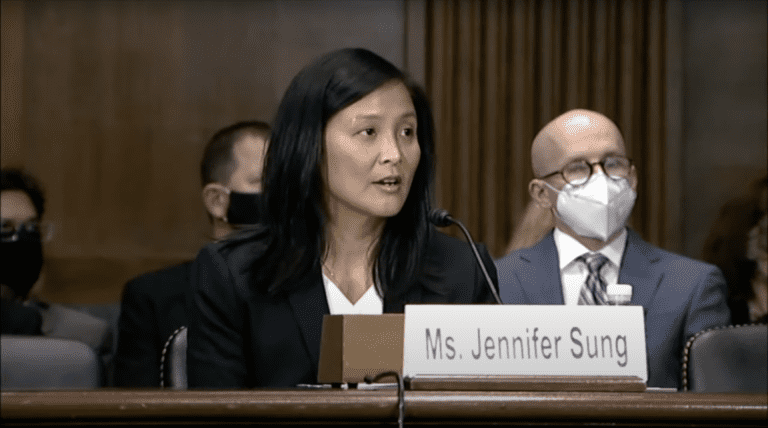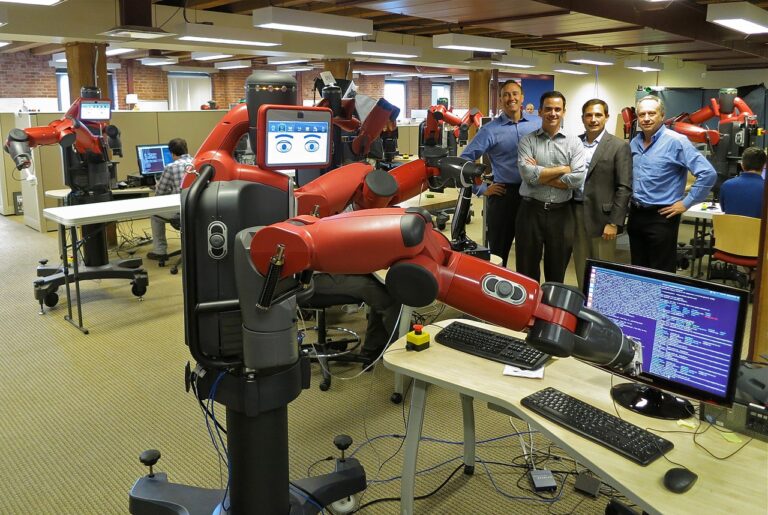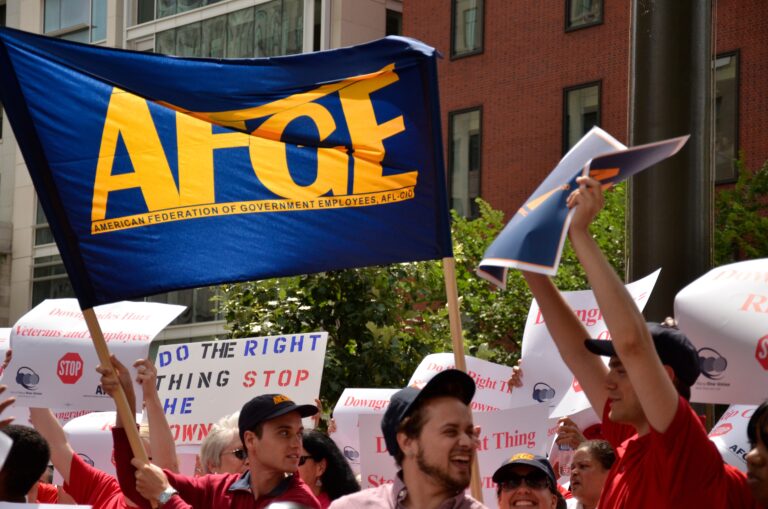
Kevin Vazquez is a staff attorney at the International Brotherhood of Teamsters. He graduated from Harvard Law School in 2023. The opinions he expresses on this blog are his own and should not be attributed to the IBT.
In 2009, United Steelworkers, the largest industrial union in North America, and Mondragon Corporation in Spain, the largest cooperative enterprise in the world, announced a historic collaborative effort to develop unionized cooperatives, called union-coops, in the United States and Canada. Three years later, the two released their detailed union-coop template. A union-coop, democratically controlled by the workers themselves, can ensure security, equality, and fairness and promote responsible, sustainable relations with surrounding communities in ways in which the traditional union bargaining process alone cannot. Moreover, traditional worker cooperatives can benefit in obvious ways from the strategic guidance, fundraising capabilities, and technical expertise of unions, and unions can benefit by adding cooperative worker-owners to their membership rolls and, more importantly, advancing the broader objectives of the labor movement. To meet the unique challenges of the twenty-first century and realize the ultimate goals of the labor movement – equality, worker autonomy, and sustainability – labor unions are wisely peering beyond the conventional model and offering institutional support for the development of union-coops throughout the country.
The USW-Mondragon model defines a union-coop as a “unionized worker cooperative in which worker-owners own an equal share [in] and have an equal vote in overseeing the business.” Democratic worker ownership is the central tenet undergirding the model: Every worker-owner has an equal vote when making decisions about production, management, and even electing the board of directors. The model also calls for employee participation in management; wage solidarity, meaning the highest-paid worker earns no more than seven times the wage of the lowest-paid; and “inter-cooperation”: cooperation, mutual assistance, and collaboration between different regional cooperatives.
The template retains many aspects of the Mondragon model, but it replaces Mondragon’s “social council,” which is responsible for protecting the interests of worker-owners as workers rather than owners, with a “union committee,” which represents all worker-owners except management. Unlike the social council, the union committee is empowered to negotiate a collective bargaining agreement regarding wages, benefits, and working conditions with management, which is appointed by the board of directors – who are directly elected by the workers. The union committee also functions as the “communications infrastructure” between workers and management.
Labor unions and worker cooperatives diverged in the twentieth century, but the USW-Mondragon model is evocative of a long, shared history in the United States that arose from a necessity imposed by poor economic conditions. The dire circumstances created by industrialization during the Gilded Age – vast disparities in wealth, rural immiseration that led to mass urban migration, horrendous urban working conditions – precipitated the growth of the cooperative movement. During that period, virtually every major labor organization in the United States advocated cooperation instead of competition, and union workers regularly formed cooperatives to provide for themselves and their families while on strike.
Creating worker cooperatives was one of the core strategies of the Knights of Labor, which emerged as the most powerful labor union in the United States after the Great Railroad Strike of 1877. The Knights included “the establishment of co-operative institutions” in their constitution and helped organize thousands of cooperatives throughout the country – including cooperative plantations among former slaves in the Deep South. The Solidarity Watch-Case Co-operative, for example, was formed in 1885 by the Knights in Brooklyn after a strike against the Brooklyn Watch Company, and it eventually grew to more than 100 workers. As part of the Solidarity Co-operative Association, it helped raise funds and coordinate efforts to organize new cooperative enterprises. The Knights, in addition to many other labor organizers, even envisaged the “Cooperative Commonwealth,” a society in which workers ran the economy on principles of cooperation and solidarity, as a broader objective.
After years of violent labor confrontations – including, most famously, the Haymarket Riot in Chicago in 1886 – the influence of the Knights waned, and they were eclipsed by the American Federation of Labor, founded at the end of that year. The AFL represented a collection of national craft unions, in contrast to the Knights, which represented both skilled and unskilled workers within the same union, and it focused primarily on securing better economic benefits through collective bargaining and contracts rather than on worker self-management and confrontations with owners. The AFL’s more conservative model replaced the dynamism and idealism of the Knights, and the cooperative movement and labor movement diverged during the economic consensus of the twentieth century.
But there are signs that a revamped partnership, reflecting both the current needs of the labor movement and present economic conditions, is imminent. That the USW-Mondragon partnership arose during the nadir of the Great Recession, when the greed and recklessness of financial institutions had decimated the economy, destroyed millions of jobs and trillions in household wealth, and led to widespread unemployment, foreclosure, and misery, is no coincidence.
One of the most famous union-coop stories, the New Era Windows saga in Chicago, also arose in the heart of the Great Recession. In December 2008, Republic Windows and Doors closed its doors, and its employees were locked out without the severance or back pay they were owed. The displaced workers, organized by the United Electrical Workers Union, decided to occupy the factory, demanding that Bank of America, which had canceled Republic’s line of credit, pay the workers their back pay and severance. The story received national attention, and the bank eventually capitulated. The factory reopened, only to be shuttered again in a few years, removed from the public spotlight. This time, with the help of UE Local 1110, the workers elected to form their own cooperative company, New Era Windows – which is still in operation today – in lieu of renegotiating with management. UE’s critical role demonstrates the function unions can – and must – play in the future development of cooperative enterprises.
Co-op Cincy, a Cincinnati nonprofit union-coop incubator founded in 2009, exemplifies the modern union-coop model. Its mission is to “create an economy that works for all” through the development of “an integrated network of community-driven, worker-owned businesses.” Co-op Cincy is an effort that has involved multiple labor unions, like the USW, AFL-CIO, and UFCW, in addition to several community groups. It has since launched two union-coops: Our Harvest food hub, which provides fresh food sourced through sustainable and responsible farming, in 2012, and Apple Street Market, a grocery store, in 2019. Co-op Cincy is one of many similar initiatives that have arisen in cities across the country in the wake of the USW-Mondragon agreement. Together, they provide an imaginative update to a historical model, and one that appears increasingly necessary in response to the distinct challenges posed by the twenty-first century.
Our economic system’s inability to manage the fallout from the coronavirus pandemic has provided an opportunity to reflect on the need for alternate models of economic organization – more specifically, ones that privilege sustainability, equality, and community needs over corporate profit. The traditional union model, despite its strengths, is an insufficient response, particularly as more gig and service workers are left out of it entirely, and this has created space for more imaginative alternatives. The union-coop model is a promising, innovative, and radical solution, and its fundamental objectives align with those of the broader labor movement. If it is to be successful, however, it will require the institutional, financial, and strategic support of labor unions.










Daily News & Commentary
Start your day with our roundup of the latest labor developments. See all
December 7
Philadelphia transit workers indicate that a strike is imminent; a federal judge temporarily blocks State Department layoffs; and Virginia lawmakers consider legislation to repeal the state’s “right to work” law.
December 5
Netflix set to acquire Warner Bros., Gen Z men are the most pro-union generation in history, and lawmakers introduce the “No Robot Bosses Act.”
December 4
Unionized journalists win arbitration concerning AI, Starbucks challenges two NLRB rulings in the Fifth Circuit, and Philadelphia transit workers resume contract negotiations.
December 3
The Trump administration seeks to appeal a federal judge’s order that protects the CBAs of employees within the federal workforce; the U.S. Department of Labor launches an initiative to investigate violations of the H-1B visa program; and a union files a petition to form a bargaining unit for employees at the Met.
December 2
Fourth Circuit rejects broad reading of NLRA’s managerial exception; OPM cancels reduced tuition program for federal employees; Starbucks will pay $39 million for violating New York City’s Fair Workweek law; Mamdani and Sanders join striking baristas outside a Brooklyn Starbucks.
December 1
California farmworkers defend state labor law, cities consider requiring companies to hire delivery drivers, Supreme Court takes FAA last-mile drivers case.